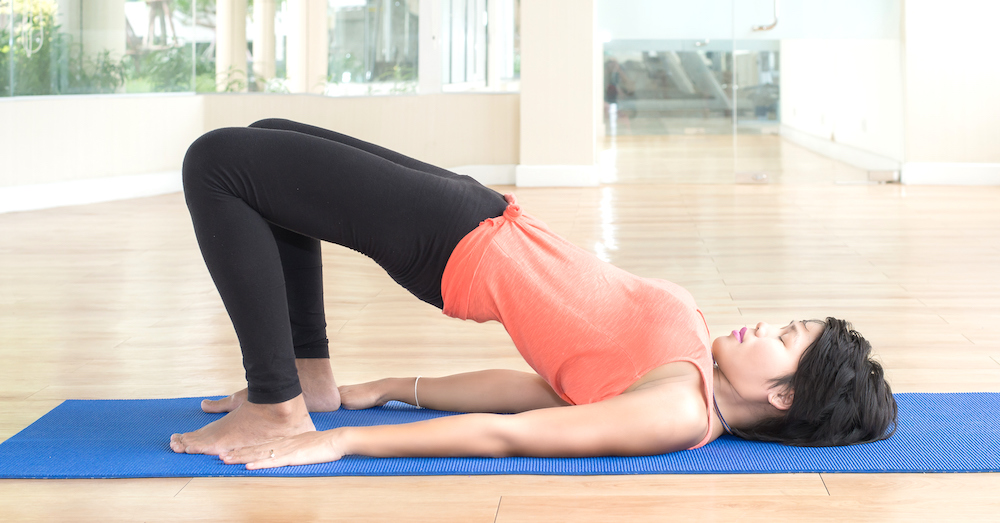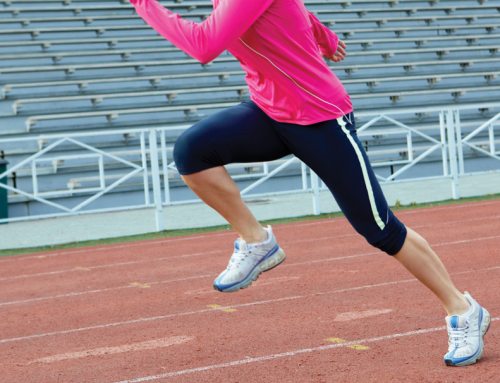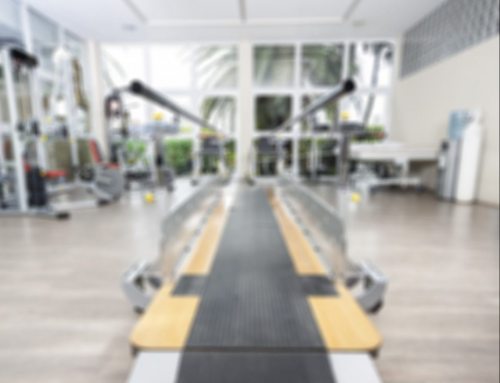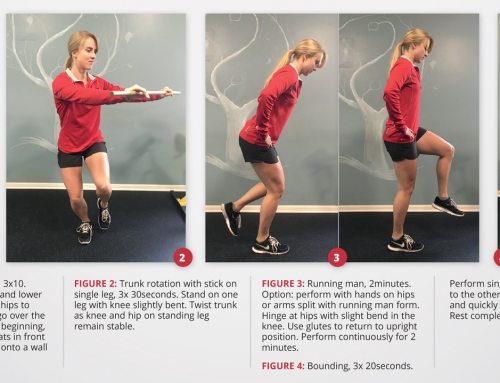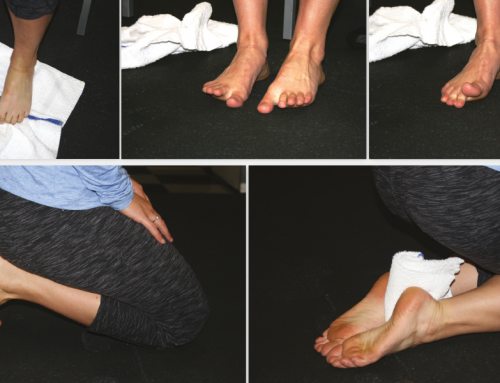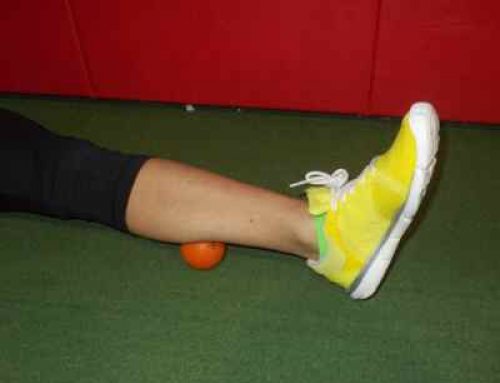By Norah Cetin
With the warm weather approaching, most avid runners are likely starting to up the mileage to prepare for summer races or simply to enjoy the sunshine. With increased mileage can come increased risk of injury, especially when done too quickly. Some of the most common overuse injuries in runners include knee pain, plantar fasciitis, and shin splints. While these injuries occur in different body parts they all have one thing in common; usually the underlying cause is somewhat similar. For most runners, the inability to activate and correctly stabilize with the gluteal muscles leads to overuse injuries. The glutes are the powerhouse and stabilizers of the lower extremity and when the glutes are not doing their job it forces other smaller muscles to take the brunt of the work.
Before I go into how to prevent these common injuries, let me briefly describe the mechanism of each of these injuries. First off, knee pain. Now there can be numerous causes for knee pain, however for runners the patella-femoral pain syndrome is going to be the most common type of knee pain. Patella-femoral pain syndrome is a general term for any pain in the anterior knee, which is usually caused by muscular imbalances between the quadriceps and the gluteal muscles. The gluteus medius and minimus control the knee in the front plane— meaning keeping your knees from “knocking” each other. When the glutes are not firing correctly it can lead to the quadriceps trying to do the job. This can lead to the quadriceps pulling extra hard on the kneecap, and therefore pain.
Plantar fasciitis occurs with the plantar fascia, a thick band of tissue running from the bottom of the heel to the base of the toes and supports the natural arch of the foot. The Achilles tendon attaches to the plantar fascia. When the calf muscles are tight it puts increased stress and tension on plantar fascia and begins to create micro-tears in the connective tissue.
With shin splints, pain occurs when the muscle running the length of your tibia, the tibialis anterior slightly pulls away from the bone due to slight bowing of the tibia during impact. As you build mileage gradually, the bone adapts to the increased load put on it and becomes stronger, however when mileage is added over a short period of time, the bone is unable to adapt at the same rate and pain occurs.
Having strong glutes can help prevent all of these injuries so working the glutes is going to be the best place to start to strengthen the lower extremities. Make sure you are properly assessed by a physical therapist or exercise physiologist to address the right need for you. Here are two of my favorite glute exercises.
The Bridge
Simple but effective, is the bridge. To perform a bridge, lie on your back and tighten your stomach. Lift your hips while squeezing your glutes together. Lift as high as you can without arching your back. Hold this for 3-5 seconds, then return to the start position and repeat for 10-15 reps and perform 2-3 sets. Make this exercise more challenging by hugging one knee into your chest and bridging up on one leg.
Single-leg Mini Squat
Next is the single-leg mini squat. The key is to sit your hips back, like you were going to sit in a chair, and to keep your knee behind your toes. Doing so ensures your glutes are firing without putting stress on the anterior knee. You may also use a countertop or sturdy chair for balance. Perform 6-8 reps of 2-3 sets on each leg.
In addition to having strong glutes, it also important to work on flexibility of the calves and quads. Tightness in either of these muscles can contribute to any of the injuries above. An easy way to stretch the quads is to stand on your left foot, bend your right knee and grab your ankle, hold for at least 30 seconds and repeat on the left. It is important to avoid arching the low back during this stretch. If you are unable to reach your ankle, loop a towel or a belt around your foot and grab the “strap” and pull your heel towards your hips.
To stretch the calves, face the wall with your toes of both feet touching the wall. Take a big step back with the right foot. Keeping both heels on the floor and the back leg straight, lunge forward onto the left leg until you feel a stretch along your right calf. Hold for 30 seconds and repeat on the left leg.
While sometimes injuries are unavoidable, especially with distance running, these stretches and exercises are a great place to start in order to maintain flexibility and gain strength and stability in the legs.
Norah is a staff physical therapist from ActivEdge Fitness & Sports Performance. Although she prefers to compete in Olympic lifting herself, she treats all levels of endurance athletes at the clinic and loves to help patients return to what they love to do!


